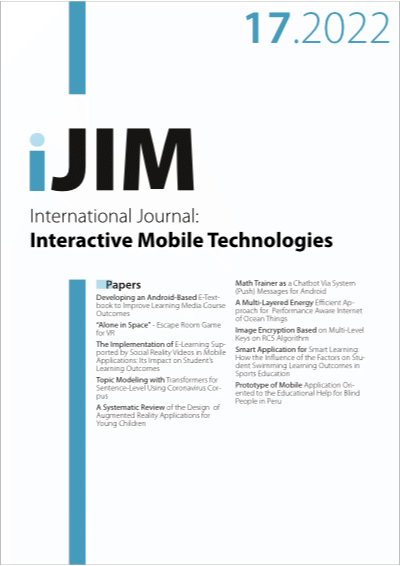Topic Modeling with Transformers for Sentence-Level Using Coronavirus Corpus
DOI:
https://doi.org/10.3991/ijim.v16i17.33281Keywords:
Topic Model, Sentence-Level, Machine Learning, LDA, BERT, BERTopicAbstract
A Topic Model is a class of generative probabilistic models which has gained widespread use in computer science in recent years, especially in the field of text mining and information retrieval. Since it was first proposed, it has received a large amount of attention and general interest among scientists in many research areas. It allows us to discover the mix of hidden or "latent" subjects that differs from one document to another in a given corpus. But since topic modeling usually requires the prior definition of some parameters - above all the number of topics k to be discovered -, model evaluation is decisive to identify an "optimal" set of parameters for the specific data. Latent Dirichlet allocation (LDA) and Bidirectional Encoder Representations from Transformers Topic (BerTopic) are the two most popular topic modeling techniques. LDA uses a probabilistic approach whereas BerTopic uses transformers (BERT embeddings) and class-based TF-IDF to create dense clusters.
Downloads
Published
How to Cite
Issue
Section
License
Copyright (c) 2022 Sara Mifrah

This work is licensed under a Creative Commons Attribution 4.0 International License.



